Editor’s Note: The post below is a first-person account from Clay McKelvy, a member of the Freedom Solar team that partnered with ABC Home and Commercial to provide an off-grid solar solution for A Child’s Hope, an Haiti orphanage located in La Montagne, Haiti that serves 300 lost and abandoned children. This 20-kilowatt solar array and battery backup system is a sustainable source of electricity that will provide 100% of A Child’s Hope energy needs, including lighting and a new aquaponics farm. This project was only possible thanks to the support of Maxeon Foundation, CED Greentech Texas, The PowerStore Inc., and Schneider Electric.
On the drive from Port-au-Prince, the people line the streets with all they have to sell. They work so hard for it. But, they have the fields to themselves. They eat enough to be stronger than you and me. Trash lines the curbs everywhere. Plastic bottles by the million fill the waterways and run like a river when it rains. Access to plumbing is non-existent, and the smell of urine is everywhere.
Traveling Through Haitian Countryside
The roads are better than many roads in the Americas, where there are roads. The tenacity of the people of Haiti is relentless, incomprehensible. They are doing everything they can to survive. When they confront us for money, they can be demanding. I think, they believe we have an endless flow of cash. Luckily, we do not stop many places. The airport is thick with people, mostly men, who aggressively approach to handle our bags. But, everywhere else, there is a distance.
The winding road from Port-au-Prince to Jacmel is hazardous enough, with lots of blind corners. But, there are no real traffic laws being observed. Cars and motorcycles pass one another, sometimes three going the same direction, a fourth going the opposite. Most of us wince about once every mile along the way, near misses as frequent as the winding turns.
[Related: Senior Living in 2022. Green Living Is The Place To Be]
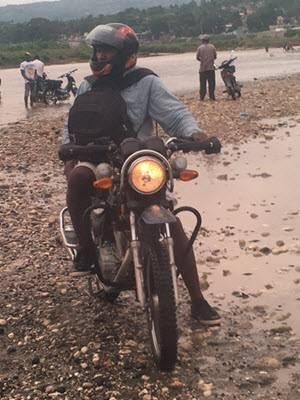
Arriving at the Orphanage
Traveling to the Haiti orphanage from Jacmel, there is a river where people bathe and wash their clothes. There is no bridge to La Montagne. Vehicles cross the rocky bottom with wheels immersed completely in the water. Wakes expand from motorcycles as they cross, and get erased by the steady flow and slow progress. But, the bikes keep running people back and forth. These are the “Tap-Taps” that make commerce possible between the people of La Montagne and Jacmel. Tap-taps come in all sizes, big old buses, pickups with seats and raincover over the beds, all brightly painted with phone numbers and advertisements. A tap-tap is a Taxi. We saw a number of motorcycles with four people aboard.
In a section of Port-Au-Prince, there is a long row of Auto Parts stores. Transportation is must. But, few Haitians can afford fuel, or any type of transportation. By proxy, the tap-taps are community-based services. There are some minor regulations around the industry, but in many areas of Haiti, there is no law enforcement. We are in the wild, on La Montagne.
The journey from Austin to the orphanage took most of the day. We arrived on site at about 6:00pm. We were worn out from the treacherous drive, cramped space, and culture shock.
Day One Complete: We eat and go to bed. The generator ran until about 11pm. Dogs barked, roosters crowed several times at weird hours, and there was snoring, loud snoring. But, we slept. The beds were decent. As warm as it was, I didn’t go under any cover, and I didn’t suffer from mosquitos, or sweat much in the night.
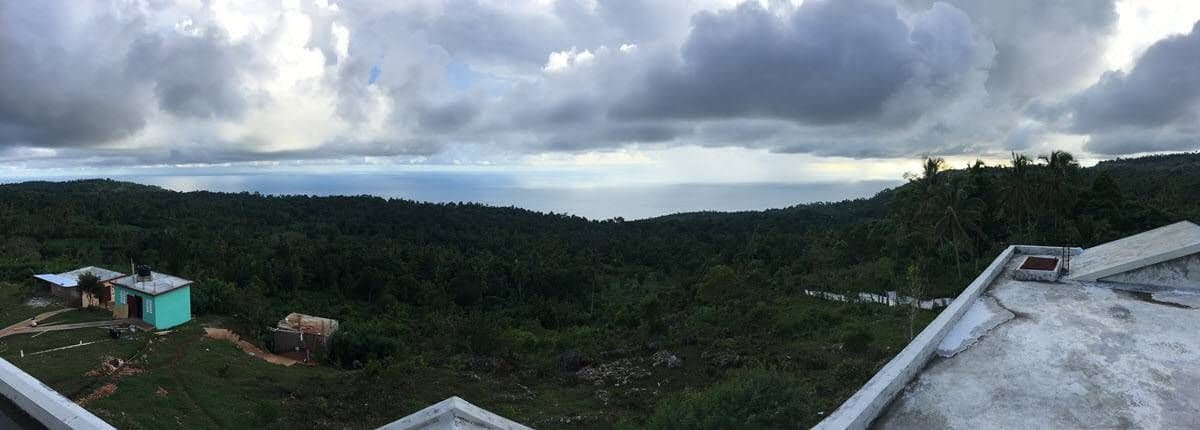
Next morning: Our hearts are open now. We embrace the people there as family when we can. But, we have work to do, and we are encountering new problems at every turn.
Obstacles During Our Installation
Three containers arrived at the Haiti orphanage, still sealed from the port.
Obstacle one: Find a means of cutting the seal. Soon, we had a hack saw. Mission accomplished. The logistics firm that packed the containers made mistakes, and the journey is rough coming up La Montagne. We find the container with the batteries a jumbled mess. However, my first voltage check on the batteries showed a higher state of charge than expected. I read 6.29VDC. This is closer to 50% state of charge than 30%. So, we have good batteries. I could sleep.
Obstacle Two: We had almost no tools, and dismantling the bracing was difficult. The nails in flooring proved hellish to extract. Members were spiral nailed to the decking, impeding the removal of our heaviest equipment. A saw, a failing sledgehammer, two claw hammers, and some violence got the job done.
Obstacle Three: The batteries had fallen onto precious thoughts and useful things. Toys were smashed, and the good containers they were in, ruined. The top of a water cooling tank was crushed, as well. Removal of the batteries required a one-by-one daisy chain, to the ground near the flatbed. We were careful, and the work was done quickly.
Obstacle Four: The Generator. At first, I thought using rails as a spanner beneath, but Brian suggested two-by-fours. We carried it out pall-bearer style, and the lift to the high flatbed required three to a side–and we released in pairs as our portion approached the edge of the flatbed. The generator weighs around 600 pounds. Getting the generator in the power-shed, we used two modes of management. One, an end of the generator skid was put on a dolly. Then, two rails were inserted to lift the other, which helped make rapid progress to the corner of the building. We successfully made two turns, then we changed methods. Pipe was sacrificed to use as well.
Obstacle Five: The Equipment Wall. Assembling everything in Austin came at a price, but we all agreed it was a time saver. Still, the equipment wall weighs in near 600 pounds. We left it in the tightly packed crate, moving it to the flatbed and lifting it the same way we did the generator. Once near the buildings, we un-crated the wall and coaxed it to the ground. The plywood creaked and popped, warning it was too weak to take much abuse. Most of the way, we rolled it on pipes, slowly.
Obstacle Six: Tool Theft. Adrian discovered the corded impact drill had been stolen at the port, threatening near certain failure drilling the holes for the wedge anchors. Luckily, Lionel had one on site. We could proceed.
Obstacle Seven: More Tool Theft. The allen wrenches were stolen from the kit. We discovered nearly half the tools we sent were gone, but the allen wrenches were needed to secure the lugs on the terminal blocks for the battery cables. We found a workaround, when Brian discovered a standard bit for the drill was the same size as the allen fitting in the terminal blocks.
Obstacle Eight: Failing Wall Anchors. When attempting to anchor to the wall, for the battery rack, we discovered the walls were cinder block. The anchors pulled large chunks of cinder from the wall with little effort. Our plan to tie into the wall is dashed. We put one decent mount in the wall for the battery rack, one L-foot in the floor to prevent creep, and one L-foot to level the shelving. For the equipment wall, we built a buck to lean against the wall, held in place by lumber anchored to the concrete flooring to prevent sliding.
We ate dinner at 6pm, and Adrian connected the pig-tail from the gen set to the inverters to put a boost charge on the batteries. From this point, we had available energy in the buildings.
Next morning, we started work after breakfast. Very early in the day, a tall Haitian woman appeared dressed in white, head to toe. She was holding an infant swaddled in white. For more than an hour and a half, she stood there silently. As quietly as she had come, she disappeared, leaving her baby in the shade at the Pavilion. Another orphan joined the ranks, unexpectedly.
Obstacle Nine: The portable generator locked up. It was running fine the night before. We needed it to run the hammer-drill on the rooftop. I pulled on the cord, but it just wouldn’t budge. I feared the worst. Suddenly, I remembered a pump engine locking up because the fuel line was left open overnight. The engine flooded so badly, the piston hydro-locked. Could it be? Yup. I pulled the spark plug out, and pulled the cord. Gasoline spurted out of the engine, as it spun freely. A few more pulls, after letting it dry up a bit and reinstalling the spark plug, and the generator started.
Obstacle Ten: About half the wedge anchors would not set. This was impeding progress, and frustrating Adrian to no end. Brian Gamez saved the day! He remembered a tip from Carlos: by putting a few loose strands of fine copper wire in the bores, the wedge anchors started setting–every one of them. Progress greatly improved, as well as our confidence in the racking.
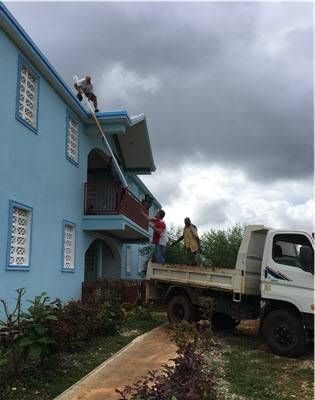
By end of day two, not counting the travel day, we had almost all of the racking installed, and six modules trickling a charge into the batteries. The next day of work would prove challenging but much easier. We knew for sure we would succeed.
All of us were working hard. Raleigh and Mike pitched in 100% of the time. Somehow, we overcame each obstacle, by luck, fortune, or providence, depending on who you talk to.
We didn’t get much time with the kids. We were working so hard, and they were on a tight schedule, too. They got excited when the lights came on the first night, when the drone made several flights, and when we passed out the toys. Normal kids, I think.
We had some kinks to work out along the way. On the first day of build, Adrian found a short to ground in the system. We didn’t know where it was, but he felt it in the chassis of the MDP when we connected the buildings to the inverters. We would find it, though. And, wiring to the kitchen, as we found it, was completely unprotected. Lionel’s electrician bypassed the disconnect and the breaker panel intended for the kitchen. When we arrived, there was a jumbled mess of wiring, all twisted and taped together, feeding the entire complex through a single wire.
The afternoon of the third day of build would bring another surprise. During lunch break, two young women appeared on site. Between, them, they had seven children they wanted to leave at the Haiti Orphanage. They persisted, in spite of several attempts by Francette to send them back home to watch over their own children, citing the Orphanage is for children without mothers.
While Francette attempted to persuade them, I headed up to my room for some cash. I came back with 80 dollars, forty for each young woman and asked Francette to speak to them. I told them, “Be careful. Do not tell anyone you have this money. Feed your children. I know you love them.” They embraced me, in tears, and left the Orphanage. I suspected this would be enough to feed them and their children for quite some time. Francette said it was enough to start their own business in Jacmel. Personally, I only wanted it to be enough to give them a little hope. I hope it was.
After making repairs to a junction box that was installed below grade, constantly getting wet in the rain, we discovered it was the cause of the short to ground. And, after rewiring the kitchen, all circuits were protected and the main disconnect was functional.
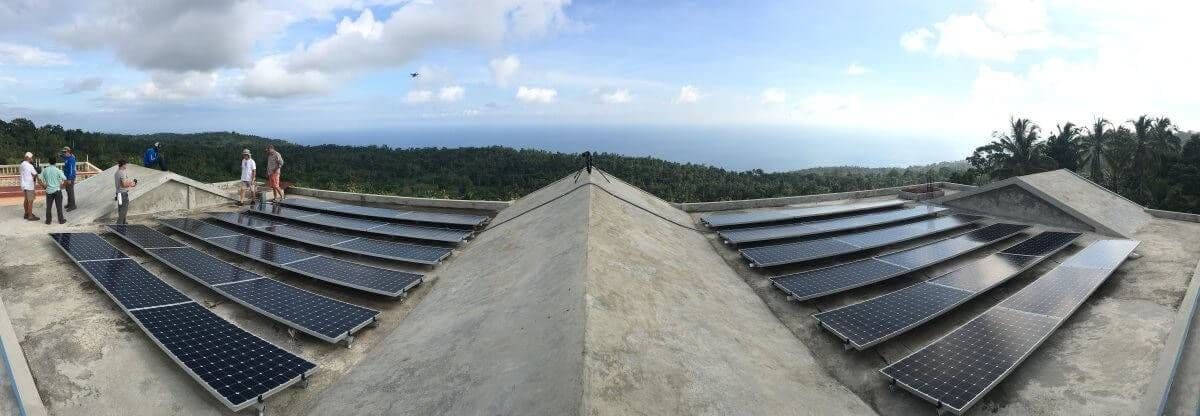
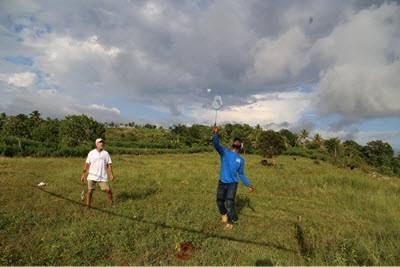
We played badminton, in spite of being sore and exhausted. The three days of build had taken a lot out of everyone, but badminton brought laughter. We enjoyed one another, and we needed the break. Only a few people can say they have played badminton on cow manure on a mountain top, in Haiti. We jumbled up the teams, and decided we were all winners.
We enjoyed late night talks about conspiracy, politics, and even religion–without conflict. The force of Love is stronger than any and all of our differences. We gained respect for one another.
Between one final task and another, we paid a visit to the school Lionel has built near the Haiti Orphanage. About 300 kids of all ages attend the school. And, on the day we were there, not a single light bulb lighted the classrooms. The blackboards were barely visible. And, I noticed an egregious lack of text books on the desks, which were makeshift tables barely wide enough for a notebook. We were there to assess what kind of off-grid energy they would need. And, I made a commitment to design something around available materials in Jacmel or Port-au-Prince.
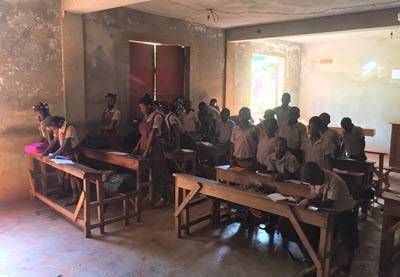
I became emotional, the morning of our departure. It is such a beautiful place, in contrast with the harsh environment down below, where the people must collide in the streets to make their wages.
We made the bumpy, curvy way to Port-au-Prince, and went out for good food. Later, Adrian, myself, Brian, and Louis took a walk through the streets in the darkness and the rain, looking for cigars and a few things we wanted to bring home, a spicy peanut butter, and some hot sauce.
We slept in plush beds, took hot showers, and departed for the airport at 6:30am the next day.
The experience is very intense. For days, maybe weeks after a visit to Haiti, I think I will never go back. But, if the right project comes, I will meet you in Haiti, if you are willing to help.
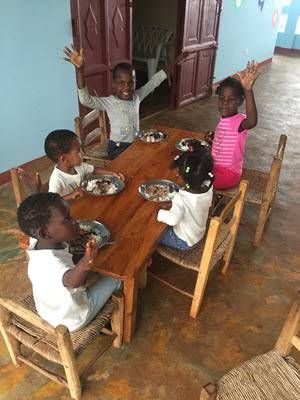
This is a great experience. We do not know how far our work will reach or how much good it will actually do. But, our hearts are in the right place. And, when we looked into the eyes of these people from so, so far away, I think we all asked ourselves how different we would be, if we faced a world each day with challenges around every corner. This is about the Children and the future. This is about love.